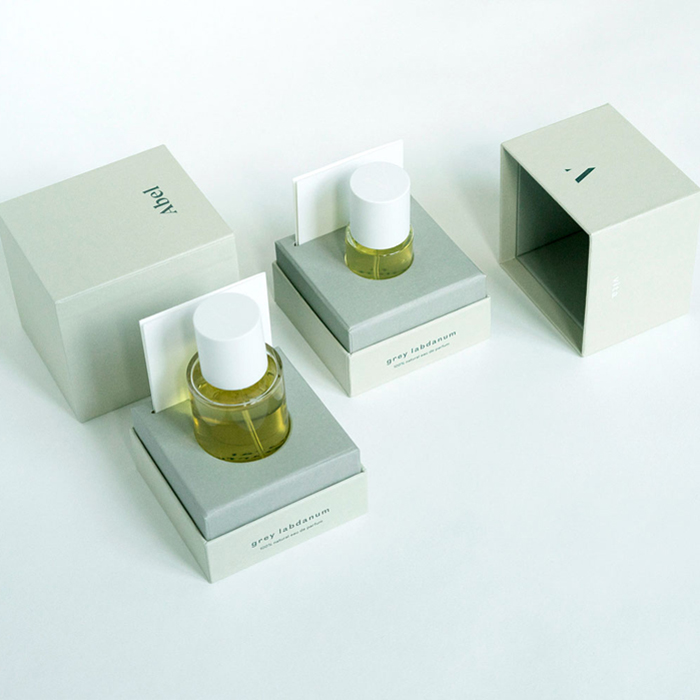- All
- Product Name
- Product Keyword
- Product Model
- Product Summary
- Product Description
- Multi Field Search
Views: 201 Author: XianDa Publish Time: 2025-01-25 Origin: Site

Content Menu
● How to Make a Perfume Box Design
● Understanding the Importance of Perfume Packaging
● Key Elements of Perfume Box Design
● Steps to Create Your Perfume Box Design
● Step 1: Define Your Brand Identity
● Step 2: Choose Your Box Type
● Step 4: Prototype Your Design
● Step 5: Collaborate with a Perfume Box Factory
● Sustainability in Perfume Packaging
● Trends in Perfume Packaging Design
● Case Studies in Successful Perfume Packaging
Creating an attractive and functional perfume box design is essential for enhancing brand identity and appealing to consumers. The perfume industry thrives on aesthetics, and the packaging plays a crucial role in influencing purchasing decisions. This guide will walk you through the steps of designing a perfume box, incorporating elements that reflect your brand while ensuring practicality.
Perfume packaging serves multiple purposes:
Protection: It safeguards the bottle from damage during transportation and storage.
Brand Identity: The design reflects the brand's values and personality.
Consumer Attraction: Eye-catching designs can draw consumers' attention on store shelves.
When designing a perfume box, consider the following elements:
Choosing the right materials is vital. Common options include:
Cardboard: Lightweight and customizable, cardboard is a popular choice for many brands. It can be easily printed on and shaped into various designs.
Kraft Paper: Eco-friendly and sturdy, Kraft paper offers a rustic look that appeals to environmentally conscious consumers.
Plastic: Durable but may lack the premium feel of paper or cardboard. Plastic can be used for specific designs that require transparency or unique shapes.


The structure of the box can enhance user experience:
Foldable Boxes: These are easy to store and transport, making them practical for both retailers and consumers.
Rigid Boxes: Provide a luxurious feel and better protection, often used for high-end fragrances.
The visual aspects should convey the essence of the fragrance:
Color Schemes: Choose colors that resonate with the scent (e.g., floral scents may use pastel colors, while woody scents might incorporate darker tones).
Graphics and Fonts: Use elegant fonts and graphics that align with your brand identity. The typography should be legible but also convey a sense of luxury or playfulness depending on your target market.
Understanding your brand’s core values, target audience, and market positioning is crucial. This will guide all design choices, ensuring consistency across all branding materials.
Decide on the type of box that best fits your product. Options include:
Sleeve Boxes: These are designed to slide over another box and offer an elegant presentation.
Rigid Boxes: Often used for premium products, these boxes are sturdy and provide excellent protection.
Window Boxes: Featuring a transparent section, these allow consumers to see the product inside, enhancing appeal.
Use graphic design software to create your artwork. Consider hiring a professional designer if needed. Ensure that:
The design is high-resolution.
All necessary information (ingredients, volume) is included.
The layout is balanced, with visual elements complementing each other rather than competing for attention.
Creating a prototype is essential to test the look and feel of your packaging. This can help identify any design flaws before mass production. Consider using digital mockups as well as physical prototypes to get feedback from potential customers or focus groups.
Partnering with a reputable perfume box factory is crucial for producing your designs. Discuss materials, printing techniques, and finishing options to ensure quality output. A good factory will also provide insights into cost-effective solutions without compromising quality.
The unboxing experience can significantly impact customer satisfaction:
Ensure that the box opens easily without damaging the packaging.
Include elements like ribbons or magnetic closures for an upscale feel.
Consider adding tactile elements such as embossing or debossing to create a more engaging experience.
Consumers are increasingly concerned about sustainability. Consider using recycled materials or eco-friendly inks to appeal to environmentally conscious buyers. Additionally, you can incorporate refillable options or minimalistic designs that reduce waste.
Staying updated with current trends can give your perfume packaging an edge in the market:
Minimalism: Clean lines and simple designs are increasingly popular as they convey sophistication.
Bold Typography: Unique fonts can make your brand name stand out while also reflecting its personality.
Interactive Packaging: Elements that engage consumers—like QR codes leading to promotional content—can enhance user interaction.
Examining successful brands can provide valuable insights:
Chanel No. 5: The iconic minimalist design has remained largely unchanged over decades, emphasizing elegance and timelessness.
Jo Malone: Known for its simple yet luxurious packaging, Jo Malone's use of cream boxes with black ribbons creates a memorable unboxing experience.
Designing a perfume box involves careful consideration of materials, structure, visual aesthetics, and user experience. By partnering with a skilled perfume box factory, you can bring your vision to life while ensuring that your packaging stands out in a competitive market. Remember that effective packaging not only protects your product but also tells a story about your brand.


What materials are best for perfume boxes?
Cardboard, Kraft paper, and plastic are commonly used materials for perfume boxes due to their durability and aesthetic appeal.
How can I make my perfume packaging more sustainable?
Use recycled materials and eco-friendly inks, consider minimalistic designs that reduce waste, and explore refillable packaging options.
What is the importance of prototyping in packaging design?
Prototyping helps identify design flaws and ensures that the final product meets aesthetic and functional requirements before mass production.
How do I choose a reliable perfume box factory?
Look for factories with positive reviews, quality certifications, experience in producing cosmetic packaging, and those willing to collaborate closely during the design process.
What design trends are popular in perfume packaging?
Minimalist designs, bold colors, unique shapes, interactive elements, and sustainable practices are currently trending in perfume packaging design.